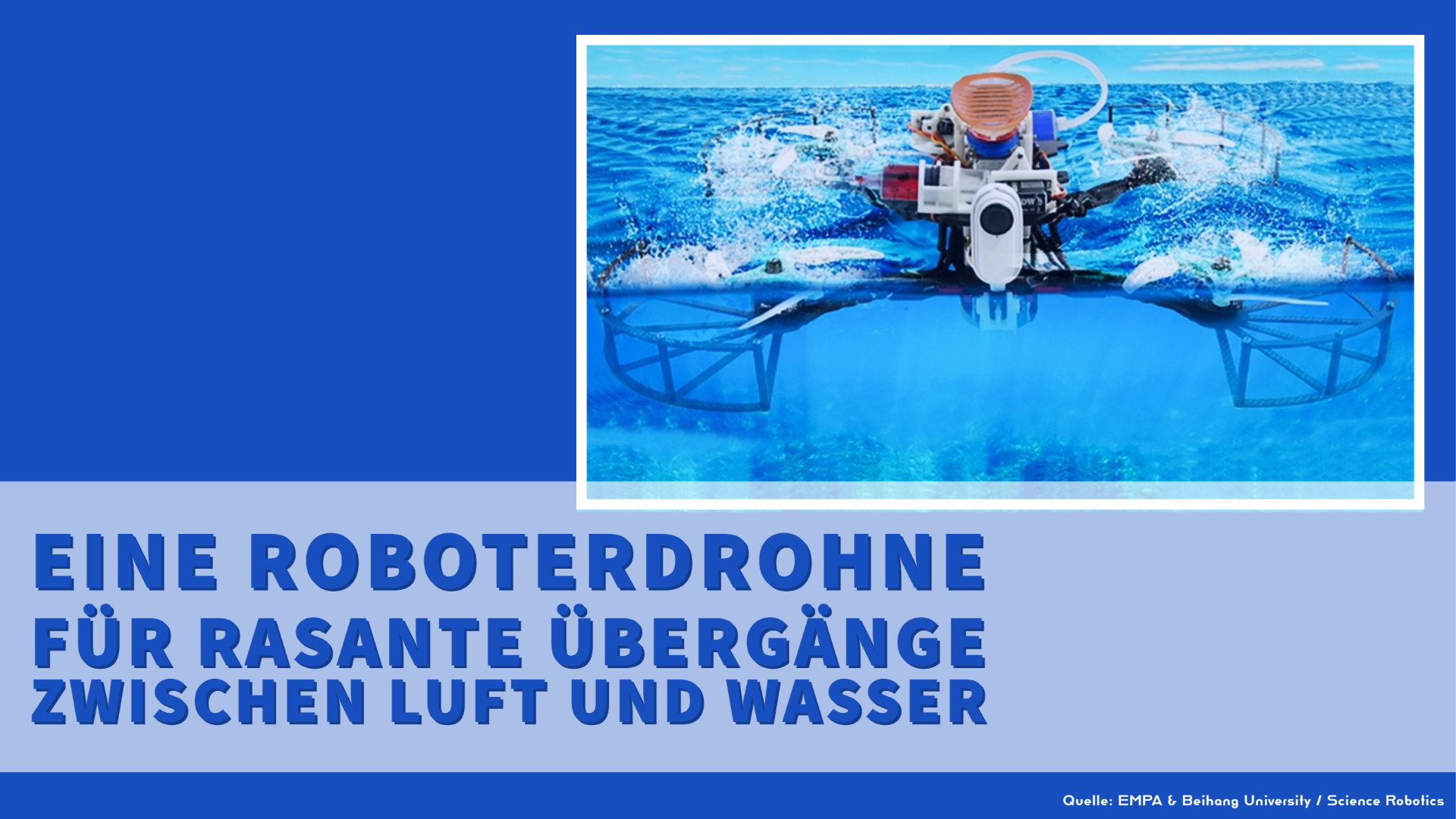
0.35 seconds - that's how little time the robot drone needs to switch from diving to flying. Researchers have developed an underwater drone that is able to transform itself into a flying drone in less than a second. The trick is that, thanks to a suction disk, it can attach itself to other moving objects and hitch a ride, so to speak. It doesn't matter whether the surface is dry or wet.
The drone was developed by scientists from China, the United Kingdom and Switzerland using a 3D printing process. The rapid transition from an underwater drone to an aerial vehicle is thanks to a new propeller design.it practically unfolds in flight in the air and thus enables a faster change between the different media than was possible with most previous air-water robots. In various tests, the robot not only succeeded in taking video recordings of the seabed, but also in filming during the transition from air to water.
The underwater drone is to be used, for example, to investigate environmental pollution on the high seas. It is designed exclusively for the biological and ecological monitoring of marine ecosystems and is not intended for military purposes, such as spying on submarines. In addition, it should be able to carry out salvage work in both fresh and salt water.
The researchers from Beihang University, Imperial College London and Empa were inspired by nature when developing the drone, in particular the ship-holding fish on which they modeled the suction disk. With the help of this special component, the drone can "hitchhike", so to speak, and attach itself to marine animals such as whales or sharks. This allows it to massively reduce its energy consumption, as the "hitchhiking" robot consumes almost 20 times less power than if it were self-propelled. The new robot drone is therefore also suitable for longer research expeditions.
"Our study shows how we took inspiration from the adhesion mechanism of ship-holding fish and combined it with airborne robotic systems to achieve novel mobility methods for robotics," says Mirko Kovac, head of Empa's Materials and Technology Center of Robotics and the Aerial Robotics Lab at Imperial College London.
You can find the complete research article on the Science Robotics website.
Du möchtest immer auf dem Laufenden bleiben?
Dann abonniere jetzt unseren FPV24 Newsletter!